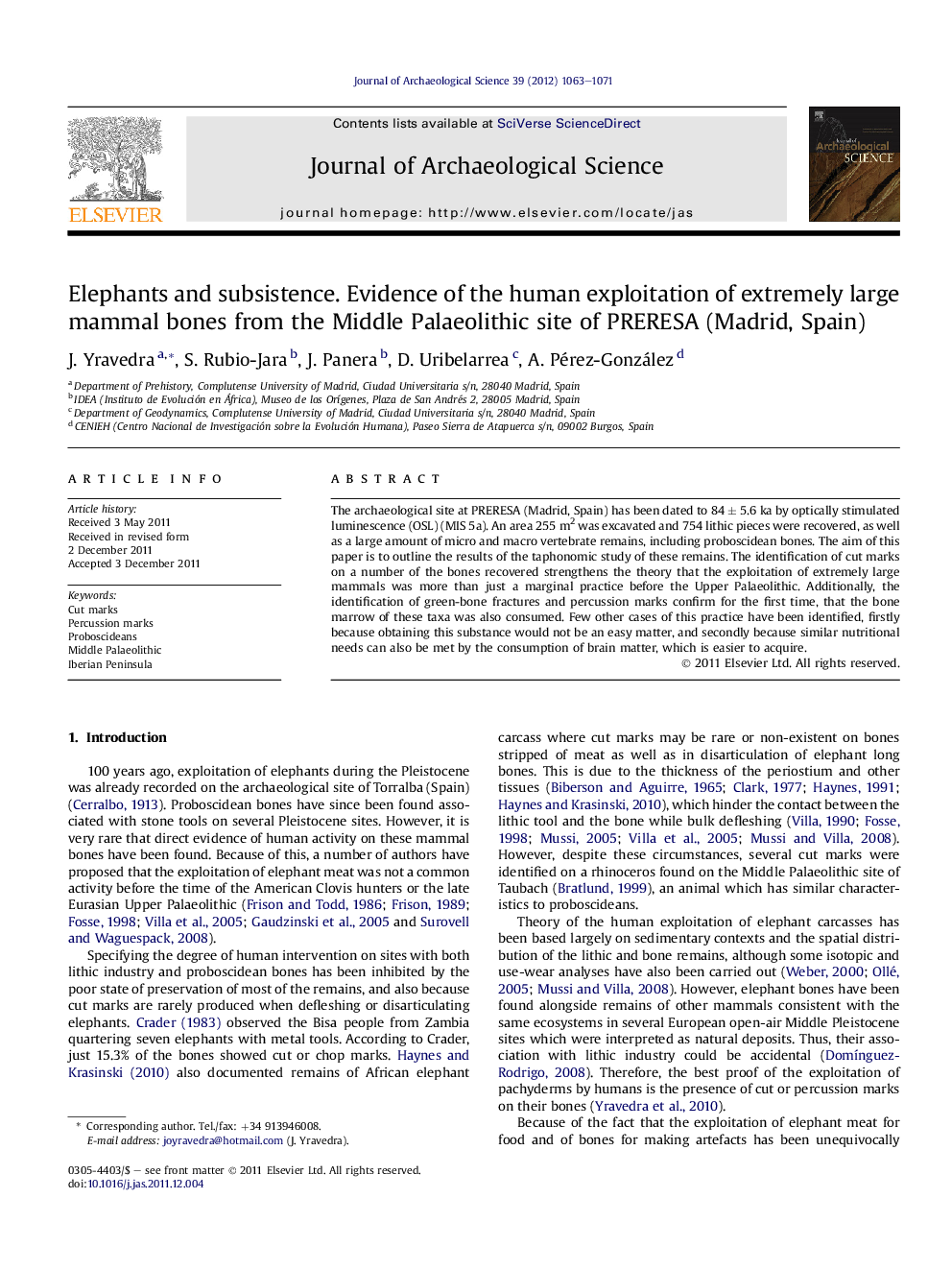| کد مقاله | کد نشریه | سال انتشار | مقاله انگلیسی | نسخه تمام متن |
|---|---|---|---|---|
| 1035597 | 943858 | 2012 | 9 صفحه PDF | دانلود رایگان |

The archaeological site at PRERESA (Madrid, Spain) has been dated to 84 ± 5.6 ka by optically stimulated luminescence (OSL) (MIS 5a). An area 255 m2 was excavated and 754 lithic pieces were recovered, as well as a large amount of micro and macro vertebrate remains, including proboscidean bones. The aim of this paper is to outline the results of the taphonomic study of these remains. The identification of cut marks on a number of the bones recovered strengthens the theory that the exploitation of extremely large mammals was more than just a marginal practice before the Upper Palaeolithic. Additionally, the identification of green-bone fractures and percussion marks confirm for the first time, that the bone marrow of these taxa was also consumed. Few other cases of this practice have been identified, firstly because obtaining this substance would not be an easy matter, and secondly because similar nutritional needs can also be met by the consumption of brain matter, which is easier to acquire.
► Proboscidean and lithics have been found associated in PRERESA.
► PRERESA (Spain) dates to the first third of Upper Pleistocene – late MIS 5.
► Cut marks confirm the exploitation of proboscidean before the Upper Palaeolithic.
► Green-bone fractures and percussion marks show that the bone marrow was also consumed.
Journal: Journal of Archaeological Science - Volume 39, Issue 4, April 2012, Pages 1063–1071